Prepping a new generation of painting and decorating apprentices
25/03/04 6 min read
Read more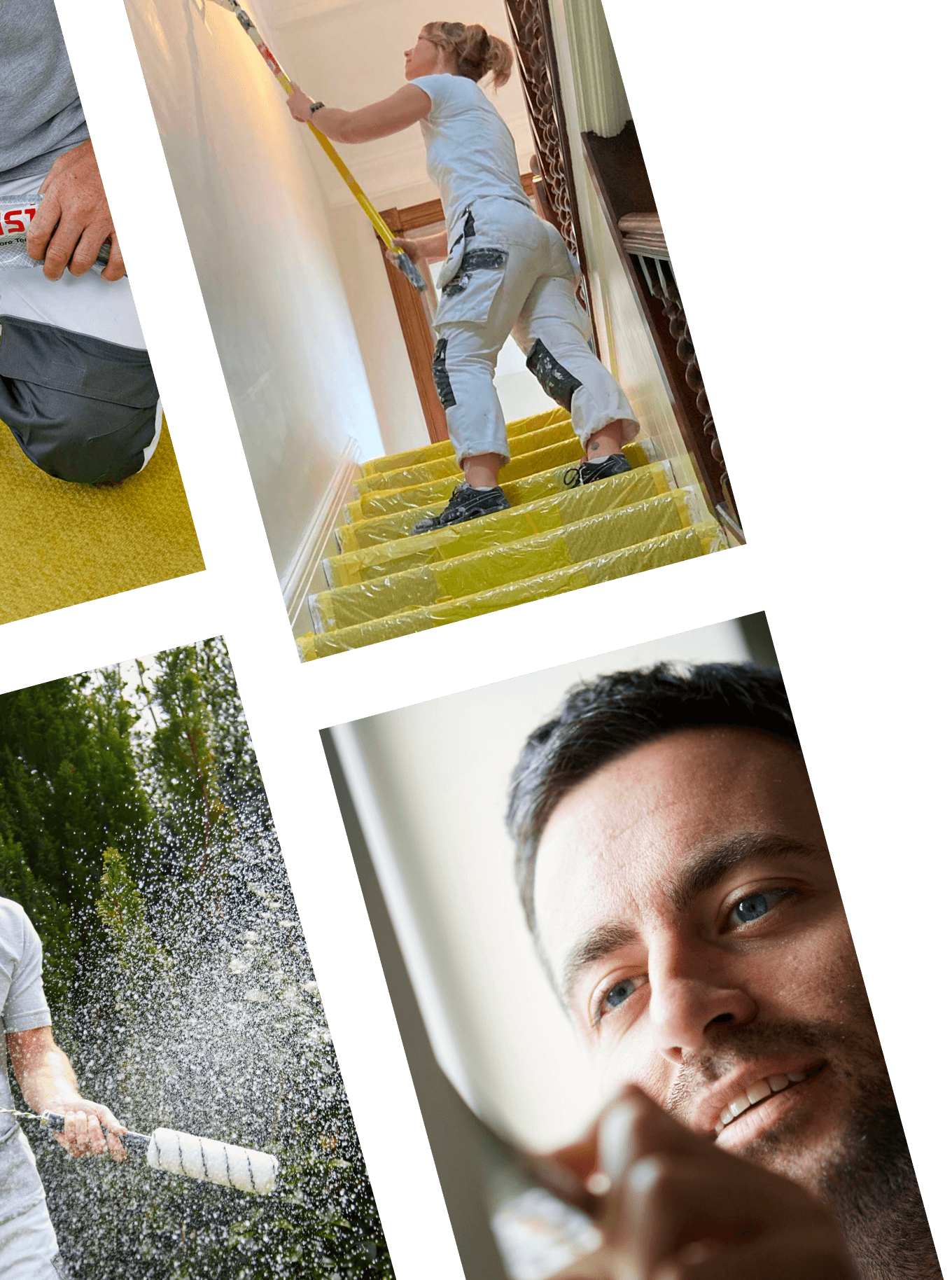
Learn about new product releases, special offers, industry news and more with the ProDec newsletter.
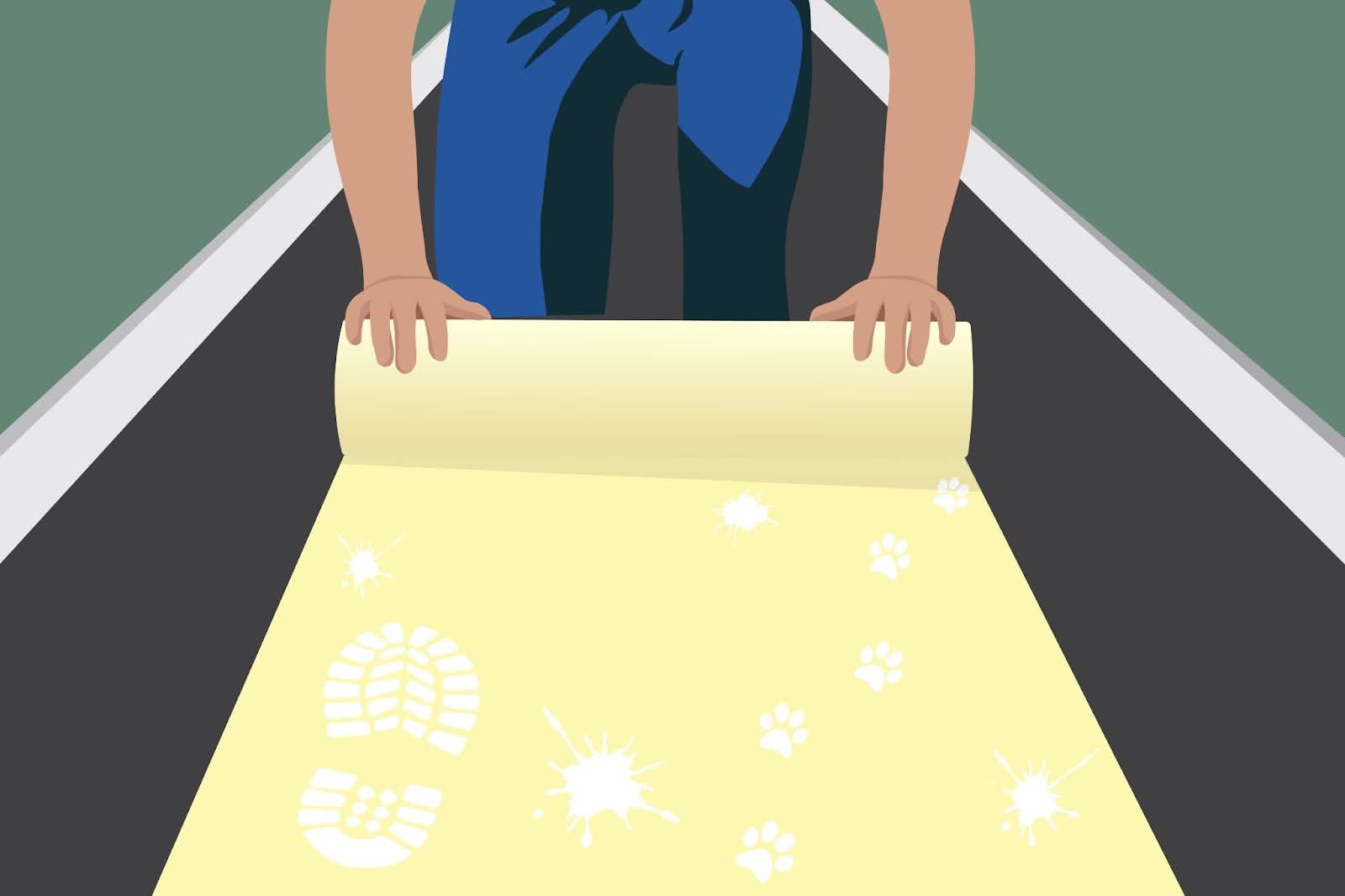
3 April 2024
6 min read
Like any profession in this world, painter and decorators want to eliminate as much additional hassle from their daily routine as possible and just get on with the job. This is where the humble, yet effective, carpet protector can be the solution for many in the trade.
Ask any decorator worth their salt and they’ll tell you one of the prime torments of the job is constantly having to shield carpets from flecks of stray paint and underfoot grime.
Carpet protector not only helps put a decorator’s mind at ease, but once laid, they’re freed up to get on with the job in an efficient and fuss-free manner – a welcome bonus in this time-dependent era.
So sit back as we cover some of the advantages – and avoidable pitfalls – when using the product, as well as hearing tales of industry mishaps which would have been avoided if carpet protector had been laid down.
The benefits of using carpet protector are across the board. It’s strong enough to endure both brief jobs and longer projects (a caveat on that below); the adhesive sits well on the carpet and is easily removable when the job is complete.
They will keep a client’s floors clean and free from damage and – for that added bit of reassurance – ProDec carpet protector is puncture resistant and waterproof. Sure, they may take a little more time to set up than spreading dust sheets around, but once down, you can move that little more freely on the job, not having to worry about dust sheets being involuntarily shuffled and moved around under foot.
That’s not to say that carpet protectors act as an out-and-out remedy for any unfortunate mishaps that can occur through work. But they are certainly your best bet for helping limit the damage caused from a spillage. If you were to spill a tin of oil-based paint on dust sheets, you may find yourself in the unenviable position of having to factor in the cost of a new carpet within your budget.
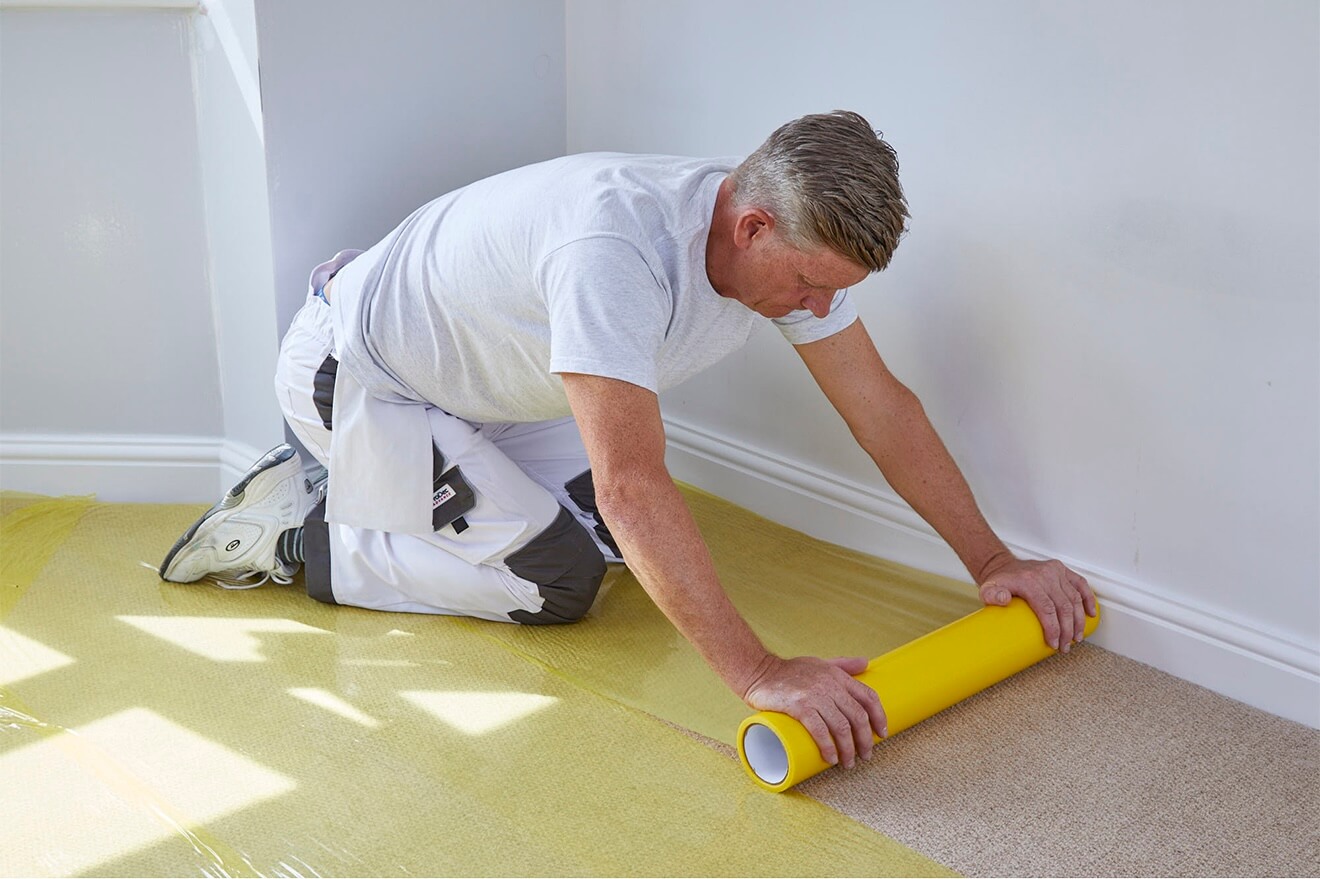 d from a spillage. If you were to spill a tin of oil-based paint on dust sheets, you may find yourself in the unenviable position of having to factor in the cost of a new carpet within your budget.
d from a spillage. If you were to spill a tin of oil-based paint on dust sheets, you may find yourself in the unenviable position of having to factor in the cost of a new carpet within your budget.
How long can you leave carpet protector on for?
An entirely valid question, given the light anti-slip adhesive used to keep it secure. It’s suggested that removal anytime within 30 days of initially laying it down will eliminate any adhesive issues, which is usually more than adequate time for a painting and decorating job to be done and dusted.
Are all carpets compatible with carpet protector?
Given its versatility, most material used for carpets is durable enough to be unaffected by carpet protector, although it isn’t for use with wool carpets and carpets treated with stain protection.
Special grades of carpet protector are required for surfaces other than carpet, such as hard floors or glass, of likes of which we also stock.
Why choose carpet protector over dust sheets?
As illustrated above, carpet protector is ideal for mitigating carpet damage during a job. And while it might be a little fiddly to initially put down, once laid you’ve immediately eliminated the kind of potential trip hazards which can present themselves when using dust sheets.
An added incentive to choose this product over traditional protection lies in its versatility. Alongside shielding against liquid spills and being puncture resistant – a particular boon when it comes to the kind of persistent foot traffic from big team projects – there’s further protection offered on the other end of the scale. The flame-retardant rating level attributed to ProDec Carpet Protector means maximum safety is offered against cigarette ash, and even blowtorch strippings.

Are there any instances where carpet protector should be used instead of dust sheets?
Not only can carpet protector offer a quick and workable cover, but it sometimes offers a much safer route in doing things.
This was certainly a sobering experience for painter decorator Jason Simmons of Jays Decorating in Ayrshire. Jason very nearly found himself in a sticky situation when he made the mistake of using regular dust sheets on a customer’s new solid wooden flooring.
20 feet high, he was suddenly flung into the air – Mirka sander in hand – when the feet of his ladders slid on the dust sheets, causing him to land, coccyx first, on his hop-up, crushing it in the process.
The sander miraculously remained intact – as did Jason – but it was a painful warning and the decorator has since used carpet protector on every hard floor with any type of ladder, large or small (and even his replacement hop-up).
The obvious takeaway here is that you need to ensure that safety is always applied, and even if carpet protector might be more commonly used for what it says in the title, the additional protection it offers shouldn’t be skated over.
Does a carpet need to be treated and cleaned before laying carpet protector down?
This is very much dependance on the cleanliness of the carpet being covered, but a good vacuum beforehand is a no-brainer, really.
This is especially recommended when it comes to those homes with four-legged friends. Depending on the number of doggies, you may find the adhesive doesn’t take to the carpet, especially those breeds who shed like a Christmas tree in January.
Why make your job harder as you fight to stop wrinkles appearing everywhere and find yourself constantly pulling up and cutting off matted bits of protector?

Can carpet protector be used in the trade outside of painting and decorating?
It’s not just your average painting job where carpet protector can be a godsend. Joel Bardall from Bardall Decorating (@bardalldecor) – host of the Fix Radio painting & decorating show – had the ultimate nightmare involving pristine cream carpets. Removing the top floor plasterboard ceiling in a large hall, stairs and landing, Joel’s naivety that a few cotton dust sheets would be sufficient to withstand and protect the onslaught of dust and rubble proved to be a disastrous choice.
Painful lessons were learned, and from that day forward, Joel now ensures that every single patch of carpeted space is covered with protector. He believes that not only does it look professional, but clients are always impressed with the effort that has gone into protecting their property.


25/03/04 6 min read
Read more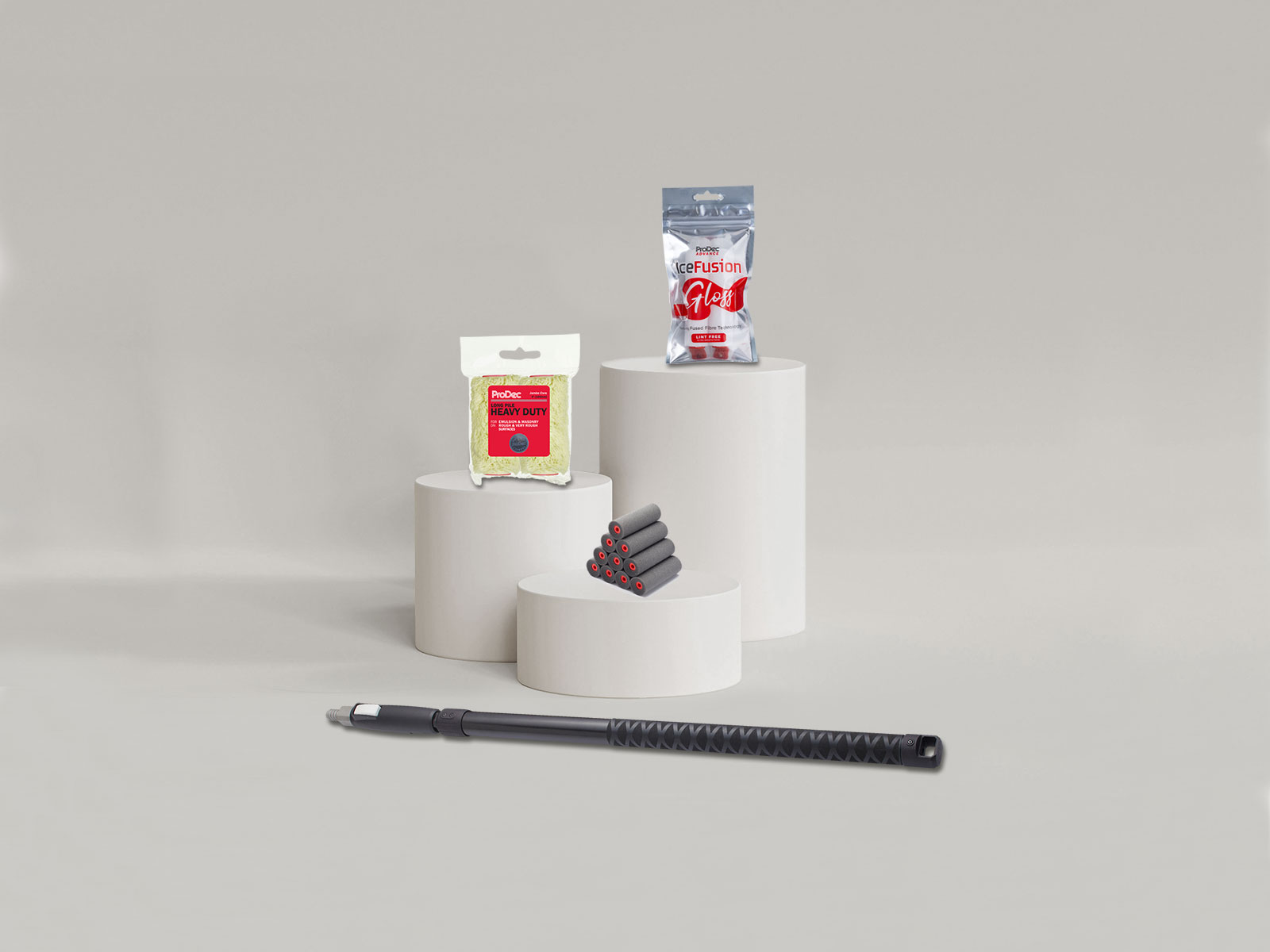
24/10/24 4 min read
Read more
24/10/12 3 min read
Read more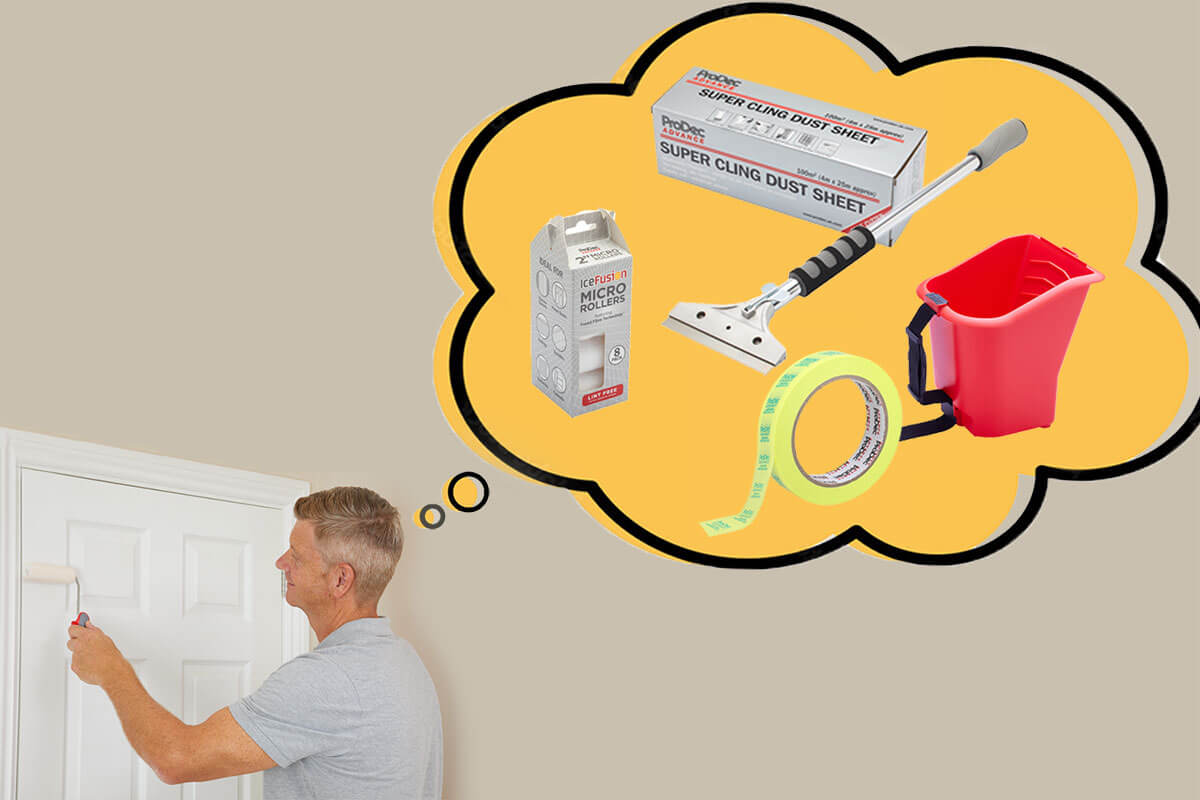
24/10/05 5 min read
Read more